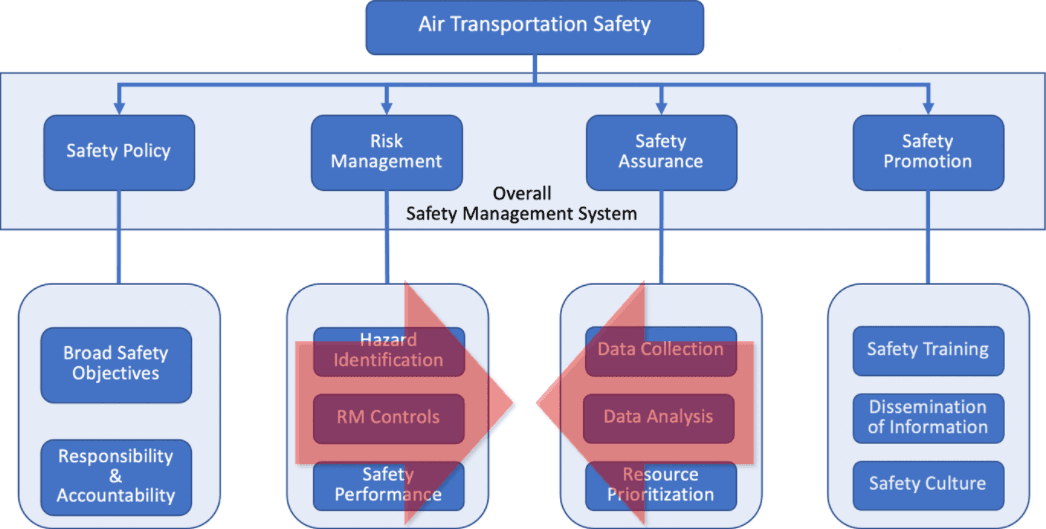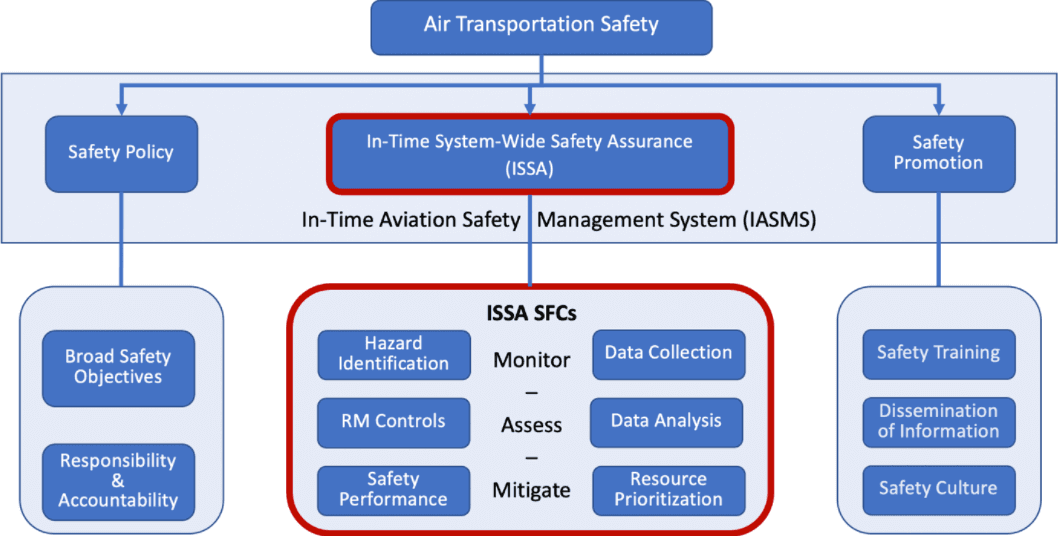Dec. 9, 2021
Our current air transportation system has underserved markets, including local, regional, intraregional and urban transportation of both people and cargo. Recent advances in aviation technology, such as small highly-automated electric aircraft and automated air traffic, are enabling business opportunities in these markets. Advanced air mobility (AAM) refers to a community effort to overcome gaps in operational rules, safety analysis and overall acceptance so that these new operations will be possible. Review NASA’s AAM information.
As we think about how to safely introduce these new operations, there are fundamental questions about how the structure of safety management systems (SMS) can be applied to AAM, and how SMS structures can help us overcome the necessary technical and societal obstacles that may impede AAM operations. These questions include:
- How do we tailor the requirements and desired level of monitoring and assessment to achieve safety given the breadth of possible operations and the associated risk of those operations?
- How do we aid innovation by rapidly evaluating the safety of novel operations without losing associated rigor?
We assume that an SMS that enables these future systems will incorporate knowledge of the acceptable level of risk and utilize data science to automate the core monitor, assess and mitigate functions that will allow us to respond to risks and hazards in time to prevent safety incidents.
In 2018, the National Academies proposed an In-Time Aviation Safety Management System (IASMS) that would advance these goals. The National Academies made a clear distinction between in-time systems, in which hazards could be identified and risks mitigated in time to prevent incidents, and real-time systems since many hazards and risks do not need real-time data and analysis to detect and mitigate.
In response, NASA began working together with the aviation community on an IASMS concept of operations (ConOps).
One assumption inherent to the IASMS is that when compared to modern SMS, the Risk Management and Safety Assurance pillars must be much more tightly interconnected than they are today. The relationship between Hazard Identification and Data Collection will be achieved through monitoring services, functions and capabilities (SFCs). Similarly, the relationship between Risk Management controls and Data Analysis will be achieved through assess SFCs; and Safety Performance and Resource Prioritization through mitigating SFCs.
Risk Management and Safety Assurance functions must merge to identify and mitigate emergent risks and hazards much more rapidly than today.

International Civil Aviation Organization, “Safety Management, Standards and Recommended Practices – Annex 19,” in Convention on International Civil Aviation, 2nd Edition, 2016
These individual, in-time, system-wide safety assurance monitor, assess and mitigate SFCs combine and integrate to achieve the overall IASMS. To understand how this works in practice, see at the figure below. Access to distributed and service-oriented data sources allows stakeholders in the national airspace to monitor the state of individual and system-wide operations. This state information is used to assess risk and predict hazards. Alerting and risk mitigation decision support can then be automated to ensure that the operators in the system can still achieve the desired levels of safety.
This is accomplished by developing Services, Functions and Capabilities (SFCs) that perform the six key elements of Risk Management and Safety Assurance with reduced levels of human interaction and dramatically increased responsiveness (In-Time).

International Civil Aviation Organization, “Safety Management, Standards and Recommended Practices – Annex 19,” in Convention on International Civil Aviation, 2nd Edition, 2016
There are many key questions that the aviation community must answer in order to understand how SMS must evolve in order to achieve AAM, including:
- How do we systematically evaluate the risk inherent to novel operations?As a society, what risk levels are we willing to tolerate in order to achieve the new aviation opportunities offered by AAM?
- Between operators, third-party service suppliers and regulators, who is responsible for each safety function, service and capability?
- What are the minimum data requirements to enable the necessary levels of safety performance?
Government and industry representatives will continue to work to develop answers to these questions and others.


 International Business Aviation Council Ltd.
International Business Aviation Council Ltd.